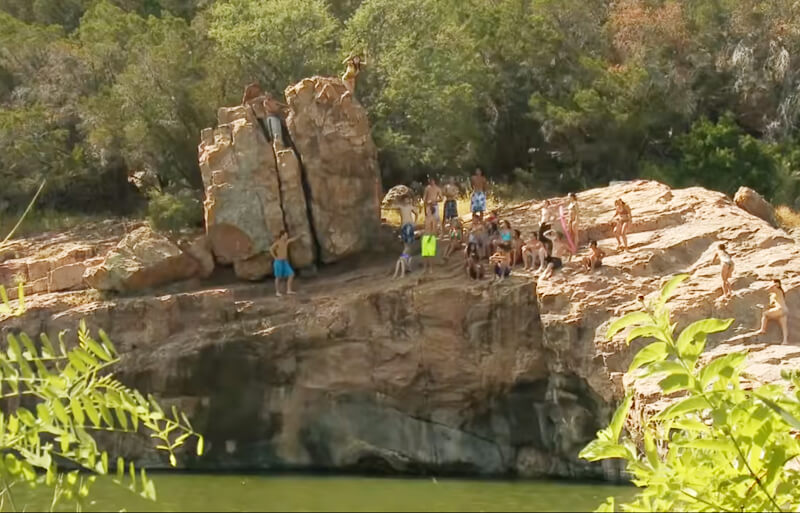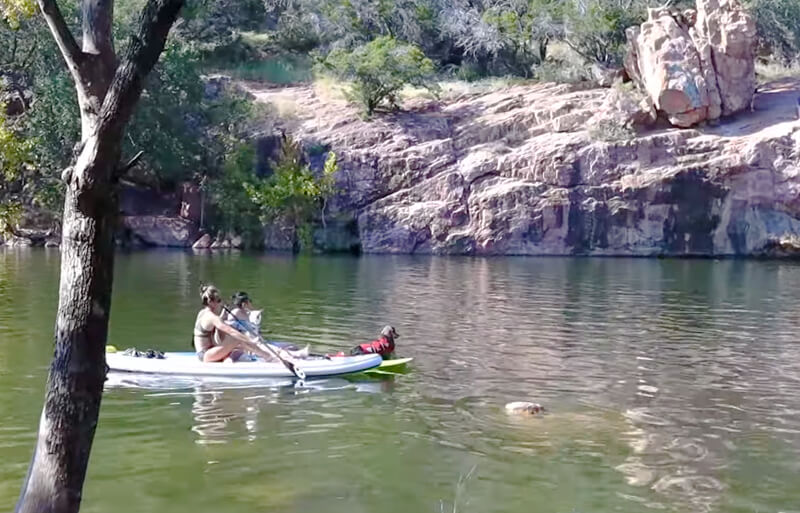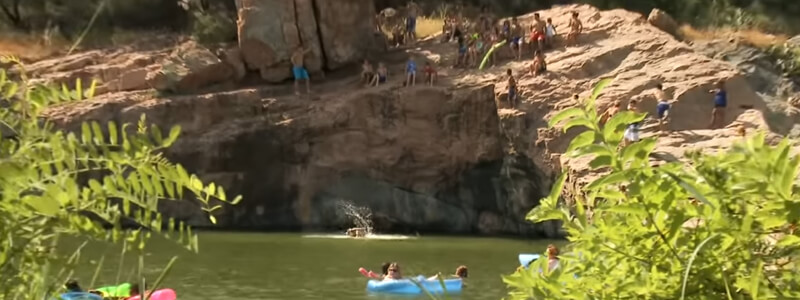Tips for Visiting Devil’s Waterhole
Contents
The Devil’s Waterhole in the Texas Hill Country is a natural wonder that has drawn visitors for years. Located at Inks Lake State Park, the Devil’s Waterhole is a popular spot for swimming, sunbathing, and fishing. The area offers both public access points and private rooms to enjoy this magical nature space.
This magical spot consists of oversized boulders that have eroded over time to create an inviting pool of emerald-green crystal-clear water. Visitors can also explore the many caves around the area and hike along its trails with gorgeous views of rolling hillsides and wildflowers all around you.
The Devil’s Waterhole encompasses two large pools connected by a narrow channel that flows through limestone cliffs into Inks Lake. This unique feature allows visitors to explore aboveground swimming holes and underwater canyons beneath the lake’s surface. It also offers ample opportunities for fishing, with bass and catfish being some of the most commonly found species in the area.
Devil’s Waterhole Cliff Jumping
Devil’s Waterhole is a popular cliff-jumping destination for brave and adventurous thrill seekers. This 120-foot limestone cliff offers one of the highest jumps in Texas, and it has become an iconic landmark for daredevils from all over the US to experience Devil’s Waterhole.

The sheer height and dangerous waters beneath have made it a sought-after destination for those wanting an adrenaline rush. Before attempting any jump, visitors must be aware of the potential hazards and follow safety precautions, as Devil’s Waterhole can be pretty intimidating due to its depth and strong current.
To get to this spot, two access points require different difficulty levels – one path is straightforward, while the other involves a strenuous hike down several miles of rugged terrain.
Why is it called Devil’s Waterhole?
The Devil’s Waterhole is a famous swimming hole located in the Inks Lake State Park in Texas. The name of this natural swimming pool has been around since the early 1800s, and there are several explanations for why it was given its unique moniker.
One explanation is that it was named after an Apache chief who frequented the area, known as “Devil” or “Diablo.” Another story claims that two brothers once fell into the Waterhole and were never seen again, thus giving it its sinister name.
Finally, some believe that the name comes from the treacherous currents generated by a nearby waterfall which created a whirlpool effect and could be dangerous for swimmers. Whatever its origin, one thing is sure – the Devil’s Waterhole has become a popular destination for those looking for a refreshing dip!
How deep is the Devil’s Waterhole?
The Devil’s Waterhole is a natural pool in the Texas Hill Country near Inks Lake State Park. It is part of the Colorado River and has been a popular swimming spot for locals and tourists since the 1950s.
The Devil’s Waterhole’s exact depth is unknown, but it is estimated to be around 40-50 feet deep. The Waterhole is surrounded by steep limestone cliffs, making it difficult to measure its depth accurately. The water is crystal clear and inviting, making it a great place to cool off on hot summer days.
The Devil’s Waterhole is also home to several fish species, including bass, catfish, and sunfish. This makes it an ideal spot for fishing as well as swimming. The area surrounding the Waterhole is also famous for hiking and camping so that visitors can enjoy all that nature has to offer while exploring this unique destination.
Inks Lake State Park
Inks Lake State Park, located in Burnet County, Texas, is a stunning piece of natural beauty that offers a variety of outdoor activities. With its serene lake waters and breathtaking landscapes, Inks Lake State Park is the perfect spot for everyone from hikers to swimmers to explore. One of the park’s most popular attractions is Devil’s Waterhole – an area renowned for fishing and scuba diving.

Inks Lake State Park also has several amenities for visitors to make their stay more enjoyable. Campers can choose from primitive campsites or more developed sites with electricity and water hookups. Cabins are also available for rent if you prefer a more comfortable stay. In addition to these accommodations, playgrounds, and restrooms are located throughout the park for added convenience.

